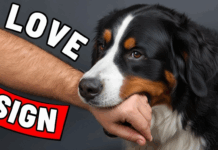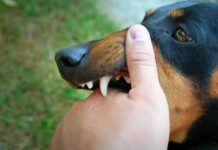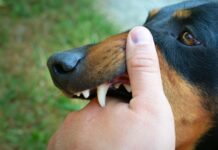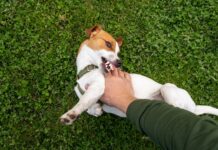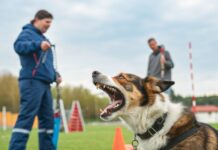Last Updated on September 20, 2024 by Dogs Vets
Introduction to Sudden Barking in Dogs
Have you recently noticed your dog barking at you for no apparent reason? Sudden changes in your dog’s barking behavior can be perplexing and concerning. Understanding why your dog is barking suddenly is crucial for maintaining a harmonious relationship and ensuring your pet’s well-being.
This guide explores the various reasons behind sudden barking, provides practical solutions, and offers tips to help you manage and reduce this behavior effectively.
Common Reasons for Sudden Barking
Sudden barking in dogs can stem from a variety of factors. Identifying the underlying cause is the first step toward addressing the behavior. Here are some common reasons why your dog might be barking all of a sudden:
Fear and Anxiety
Fear and anxiety are significant triggers for sudden barking. Dogs may bark when they feel threatened or insecure due to:
- Loud noises (e.g., thunderstorms, fireworks)
- New people or animals in the home
- Changes in the environment or routine
- Past traumatic experiences
When a dog is anxious or scared, barking becomes a way to express discomfort and seek reassurance.
Reference: American Veterinary Medical Association – Canine Anxiety
Attention-Seeking Behavior
Dogs often use barking as a means to gain attention from their owners. This behavior can manifest when:
- They want to play or engage in activities
- They are hungry or thirsty
- They need to go outside for a bathroom break
Understanding what your dog is trying to communicate can help address their needs more effectively.
Reference: PetMD – Why Do Dogs Bark?
Territorial Aggression
Territorial instincts can cause dogs to bark suddenly when they perceive a threat to their space. This behavior is common in:
- Dogs who guard their home or property
- Dogs who are protective of their family members
Training and socialization can help mitigate territorial barking by teaching your dog to differentiate between real threats and normal daily activities.
Reference: American Kennel Club – Territorial Behavior
Boredom and Excess Energy
A bored dog with excess energy is more likely to engage in sudden barking. Lack of mental and physical stimulation can lead to frustration and restless behavior. Ensuring your dog gets adequate exercise and interactive playtime can significantly reduce unwanted barking.
Reference: The Spruce Pets – How to Stop Your Dog from Barking
Health Issues
Sudden barking can also indicate health problems such as:
- Pain or discomfort from injuries
- Cognitive dysfunction in older dogs
- Neurological issues
If your dog’s barking is accompanied by other signs of illness, a visit to the veterinarian is essential to rule out medical conditions.
Reference: PetMD – Health-Related Barking
What to Do If Your Dog is Barking Suddenly
Addressing sudden barking requires a combination of observation, training, and sometimes professional help. Here’s a step-by-step approach to manage and reduce sudden barking:
1. Assess the Situation
- Observe your dog’s environment and behavior to identify any immediate triggers.
- Check for medical issues by looking for signs of pain or discomfort.
2. Provide Reassurance
- Calmly speak to your dog to soothe their anxiety.
- Use gentle touches and positive body language to offer comfort.
3. Offer Exercise and Stimulation
- Increase physical activity through walks, playtime, and interactive toys.
- Engage in mental stimulation with puzzle toys or training sessions.
4. Implement Training Techniques
- Positive reinforcement: Reward quiet behavior with treats and praise.
- Teach commands like “quiet” or “enough” to control barking.
5. Create a Safe Environment
- Minimize exposure to known triggers such as loud noises.
- Provide a comfortable space where your dog feels secure.
6. Consult a Professional
- Veterinarian: Rule out any medical causes for sudden barking.
- Animal behaviorist: Seek expert advice for persistent or severe barking issues.
Reference: American Humane – Training Your Dog
Managing Nighttime Barking
Nighttime barking can disrupt both your and your dog’s sleep. Here are effective strategies to reduce barking at night:
Establish a Routine
- Set consistent bedtime and wake-up times to create a stable schedule.
- Provide a comfortable sleeping area free from distractions.
Increase Daytime Exercise
- Ensure your dog gets enough physical activity during the day to tire them out by night.
Use Calming Aids
- Calming music or white noise can help soothe your dog.
- Consider anxiety-reducing products like calming collars or supplements.
Training Sessions
- Reward quiet behavior during the night with treats and praise.
- Ignore barking to avoid reinforcing the behavior.
Consult a Professional
- If nighttime barking persists, seek help from a professional trainer or behaviorist.
Reference: PetMD – How to Stop Your Dog from Barking at Night
When to Consult a Professional
If you’ve tried various methods to reduce your dog’s sudden barking without success, it may be time to seek professional help. A veterinarian can rule out medical issues, while an animal behaviorist can provide specialized training techniques tailored to your dog’s specific needs.
Conclusion
Sudden barking in dogs can stem from a variety of factors, including fear, anxiety, attention-seeking, territorial instincts, boredom, and health issues. By understanding the underlying causes and implementing effective strategies, you can address and reduce unwanted barking behaviors.
Always prioritize your dog’s well-being by providing adequate exercise, mental stimulation, and a secure environment. If necessary, don’t hesitate to seek professional assistance to ensure a harmonious and peaceful household for both you and your furry friend.
Frequently Asked Questions (FAQ)
1. Why is my dog barking at me all of a sudden?
Sudden barking can be caused by fear, anxiety, attention-seeking, territorial instincts, boredom, or underlying health issues. Observing your dog’s behavior and environment can help identify the trigger.
2. How can I stop my dog from barking at nothing?
Provide adequate exercise and mental stimulation, use positive reinforcement training, ensure a comfortable and secure environment, and consult a professional if the behavior persists.
3. Is sudden barking a sign of a health problem?
Yes, sudden barking can indicate pain, discomfort, or other health issues. If accompanied by other symptoms, a visit to the veterinarian is recommended.
4. How do I train my dog to stop barking at strangers?
Use positive reinforcement to reward quiet behavior, teach commands like “quiet,” and gradually expose your dog to strangers in a controlled environment to reduce territorial instincts.
5. What should I do if my dog barks incessantly at night?
Establish a consistent bedtime routine, increase daytime exercise, use calming aids, implement training techniques, and consult a professional if nighttime barking continues.
References and Further Reading
- American Veterinary Medical Association – Canine Anxiety
- PetMD – Why Do Dogs Bark?
- American Kennel Club – Territorial Behavior
- The Spruce Pets – How to Stop Your Dog from Barking
- PetMD – Health-Related Barking
- American Humane – Training Your Dog
- PetMD – How to Stop Your Dog from Barking at Night
Facts Check:
We hope you enjoyed this article… What are your thoughts? Рleаse feel free to share this article!

